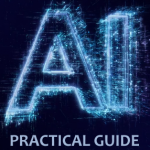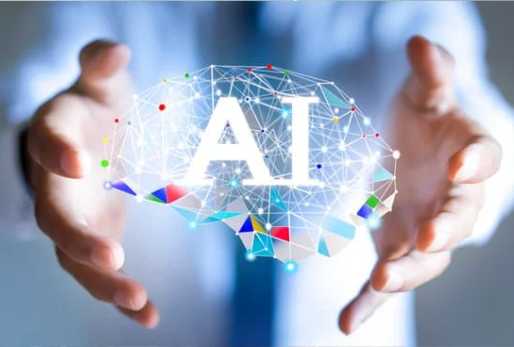Beginner’s Guide to AI: Essential Concepts for a Solid Foundation
I understand that diving into the world of artificial intelligence can be overwhelming for newcomers. This beginner’s guide to AI aims to simplify the essential concepts you need to grasp before embarking on your learning journey. We’ll explore the history of AI, its different branches, real-world applications, and the resources you can use to get started.
A Brief History of Artificial Intelligence
The concept of artificial intelligence dates back to ancient history, with myths and legends featuring automatons and intelligent machines. However, the field of AI as we know it today emerged in the mid-20th century. Key milestones in AI history include:
- 1950: Alan Turing proposes the Turing Test, a criterion for determining whether a machine exhibits human-like intelligence.
- 1956: The Dartmouth Conference, which brought together leading researchers and laid the groundwork for AI as a field of study.
- 1960s-70s: The development of early AI programs and systems, such as ELIZA, SHRDLU, and MYCIN.
- 1980s: The rise of expert systems, which use knowledge-based approaches to solve specific problems.
- 1990s: The emergence of machine learning, focusing on algorithms that can learn from data.
- 2000s: The growth of deep learning, a subfield of machine learning that uses neural networks to model complex patterns.
What is Artificial Intelligence?
Artificial Intelligence (AI) refers to the development of computer systems capable of performing tasks that would typically require human intelligence. These tasks include learning, reasoning, problem-solving, perception, and natural language understanding. AI systems can be categorized into two main types:
- Narrow AI: Also known as weak AI, these systems are designed to perform a specific task or a set of tasks, such as image recognition or language translation. Narrow AI is what we encounter most in our daily lives, like Siri or Google Assistant.
- General AI: Also known as strong AI, these systems possess human-level intelligence across a wide range of tasks. General AI is still a theoretical concept and has not yet been achieved.
Key AI Concepts
To build a strong foundation in AI, it’s essential to understand some of the key concepts and subfields within the domain:
- Machine Learning (ML): A subset of AI, ML involves training algorithms to identify patterns and make decisions based on data. ML techniques include supervised learning, unsupervised learning, and reinforcement learning.
- Deep Learning: A subfield of ML, deep learning uses neural networks to mimic human brain processes, enabling complex pattern recognition. Applications of deep learning include image and speech recognition, natural language processing, and autonomous vehicles.
- Natural Language Processing (NLP): A field of AI focusing on teaching computers to understand and generate human language. NLP techniques are used in applications like chatbots, sentiment analysis, and machine translation.
- Computer Vision: An area of AI that deals with enabling computers to interpret and understand visual information from the world. Computer vision applications include facial recognition, object detection, and image segmentation.
- Robotics: A field that combines AI with mechanical engineering to create intelligent machines capable of interacting with the physical world. Robotics has applications in manufacturing, healthcare, agriculture, and more.
Real-World Applications of AI
AI has transformed various industries and aspects of our lives. Some common real-world applications include:
- Healthcare: AI-powered tools assist in diagnostics, drug discovery, and personalized medicine.
- Finance: AI is used in fraud detection, algorithmic trading, and customer service chatbots.
- Marketing: AI helps target customers through personalized recommendations, sentiment analysis, and programmatic advertising.
- Transportation: AI enables self-driving cars, traffic management, and route optimization.
- Entertainment: AI algorithms generate personalized content recommendations on platforms like Netflix and Spotify.
Starting Your AI Journey
With a solid understanding of the fundamental concepts, you can now explore AI further through various resources:
- Online Courses: Platforms like Coursera, Udacity, and edX offer AI courses for beginners, ranging from introductions to specific subfields to comprehensive programs.
- Books: Some popular AI books for beginners include “Artificial Intelligence: A Guide for Thinking Humans” by Melanie Mitchell, “Life 3.0: Being Human in the Age of Artificial Intelligence” by Max Tegmark, and “Superintelligence: Paths, Dangers, Strategies” by Nick Bostrom.
- Tutorials and Blogs: Follow reputable AI blogs and YouTube channels for tutorials, news, and insights. Some popular options are the Google AI Blog, OpenAI, and Two Minute Papers.
- Podcasts: Listen to AI-focused podcasts like “Artificial Intelligence with Lex Fridman” or “The Ed Mylett Show” to stay updated on the latest developments and learn from industry experts.
- Networking: Join AI-related communities, attend conferences, and engage with fellow enthusiasts to learn from their experiences and stay motivated.
Remember, the key to success in learning AI is curiosity, persistence, and patience. As you progress, you’ll discover new areas of interest, and your knowledge and skills will grow. Keep exploring, and enjoy the journey!


Trackbacks/Pingbacks